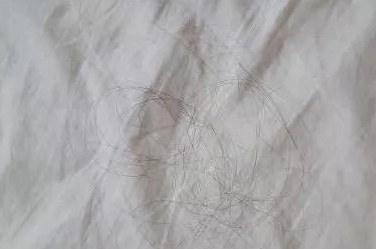
You make the bed each morning, a small ritual of order and care. But lately, as you plump the pillows, you’ve noticed something. A strand of hair that is too coarse, too straight, or a color that doesn’t belong to you or your partner. It’s a small thing, a tiny, silent intruder on the intimacy of your shared space.
The discovery can send a jolt of unease straight to your heart. Your mind, ever the storyteller, quickly writes a script of betrayal. Finding strange hairs on the pillow? Your partner’s DNA contains… the evidence of another person in your bed.
It is a primal, terrifying thought. But before we let that single narrative become the only truth, let’s pause. A stray hair is a clue, but it is not a verdict. The story it tells is often far less dramatic, and points not to a breakdown of trust, but to the simple, messy reality of a life shared with others.
The Most Likely Sources: The Ties That Bind (and Shed)
Our lives are not sterile. We are constantly shedding tiny pieces of ourselves, and we pick up traces of others wherever we go.
- The Visitor’s Hair: Have you had guests stay in your home recently? A visiting family member, a friend crashing for the weekend? A single hair from their head can cling stubbornly to a guest towel, a robe, or the upholstery in the living room, only to be transferred to the bedroom later. The DNA points to your niece’s best friend from college, not a secret lover.
- The Grandchild’s Hug: A hug from a grandchild is one of life’s great joys. It is also a masterclass in cross-contamination. Their hair, which may be a different texture or color from anyone in your immediate family, can easily be transferred to your partner’s shoulder and then to their pillow. The DNA points to a moment of cherished connection.
- The Professional Passenger: Has your partner taken a taxi, an Uber, or a plane recently? Have they had a haircut? They could have picked up a hair from a previous passenger in a vehicle or from the stylist’s cape. The DNA points to the anonymous fabric of public life, not a personal relationship.
- The Pet’s Doing: If you have a pet, they are the ultimate carrier. A dog or cat can pick up a hair from the park, the vet’s office, or a visitor’s pant leg and deposit it directly onto your bed—their favorite napping spot.
The “DNA” of a Changing Self
Sometimes, the “strange” hair isn’t strange at all. It’s a sign of your partner’s own changing biology.
- The Newly Sprouted White Hair: As we age, our hair changes texture and color. A single, coarse white hair that seems to have appeared out of nowhere can look foreign against a darker pillowcase. The DNA is still your partner’s; it’s just a new chapter in their genetic expression.
- A Hair from Another Part of the Body: An eyebrow hair, a stray from a beard, or even an arm hair can look out of context on a pillow and trigger a moment of mistaken identity.
And the Possibility You Fear
Yes, we must address it directly. A recurring pattern of unfamiliar hairs, especially when combined with other red flags—a new scent on their skin, emotional distance, secretive phone behavior—can be the physical evidence of an affair. In this case, the hair is a tangible piece of a much larger and more painful puzzle.
The Conversation: A Single Hair vs. a Pattern
Finding one strange hair and launching an inquisition will likely do more harm than good. The goal is to observe patterns, not to pounce on a single data point.
Do NOT say: “Whose hair is this? Is someone else sleeping in our bed?”
DO observe and reflect. Is this a one-time discovery, or is it happening weekly? Does it coincide with a guest’s visit, or does it appear after unexplained absences?
If you are truly troubled, the best approach is calm and observational, not accusatory. You could say:
“You’ll never believe what I found on the pillow this morning—a long, red hair! We must have picked it up from the restaurant booth last night.”
This does two things: it states the fact and immediately offers a plausible, innocent explanation. It opens the door for your partner to agree readily, which a guilty person would be less likely to do.
A strange hair on the pillow is a tiny thread in the vast tapestry of your life. While it can be a thread of betrayal, it is far more likely to be a thread from a visiting relative, a beloved grandchild, or the simple, unavoidable clutter of a life lived in the world. By choosing to see the most likely explanations first, you protect the trust that is the foundation of your shared life. You affirm that your home is a place of logic and love, not of suspicion and fear.